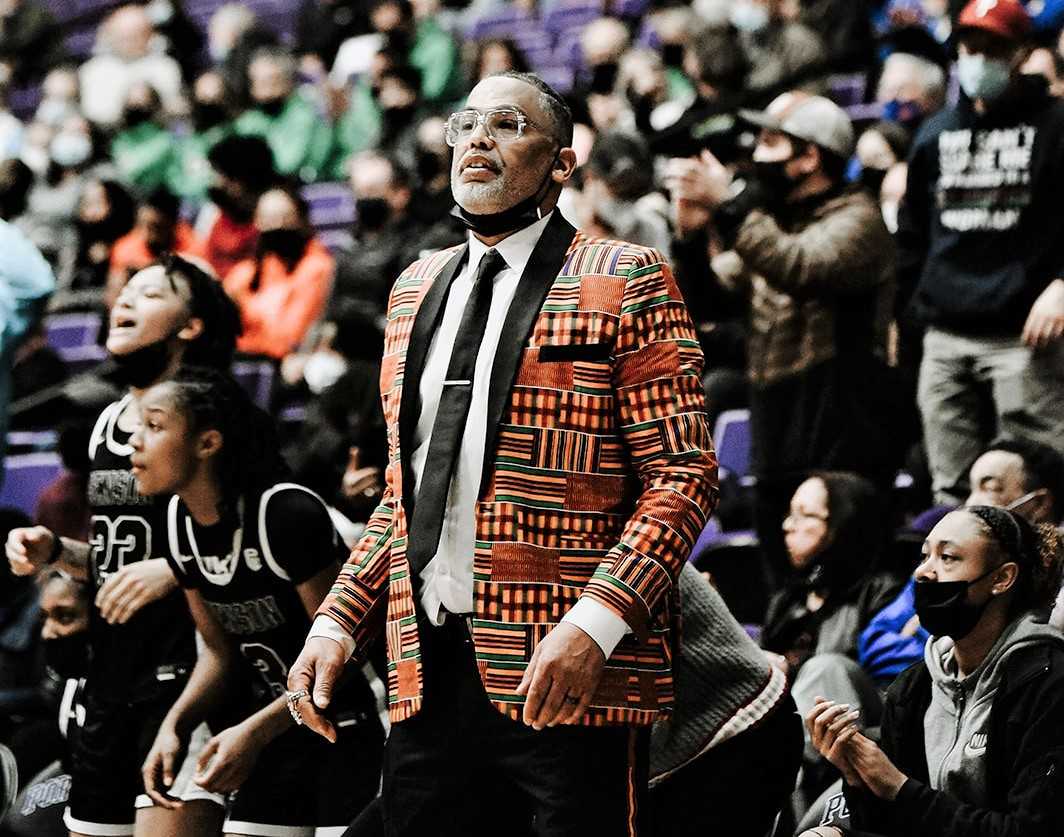
After years of debate, the shot clock finally is coming to Oregon high school basketball.
The rule change came up for vote Monday by the OSAA executive board, which approved the use of a 35-second shot clock for varsity games starting with the 2023-24 season.
The unanimous vote in favor of the shot clock is seen as a victory by most coaches. In an Oregon Basketball Coaches Association survey, 220 favored the shot clock, 48 were against it and 28 had no preference.
“The game is already in the hands of the players,” said Lake Oswego boys coach Marshall Cho, who has pushed for the shot clock. “Having a shot clock now gives us a structure to equipping our players to play with that parameter.
“It gives each pass, each action and each possession more urgency and purpose. If it's in the hands of a good coach, you can see the quality of the game go up.”
Benson girls coach Eric Knox believes the shot clock will give the game a boost.
“Girls basketball is on an incredible trajectory in the state of Oregon, and I think this will enhance that,” Knox said. “It's going to force kids to get better at skill. It's going to necessitate that you get in the gym and you work on your skill set. That's going to enhance your opportunities after high school.”
The shot clock does have its detractors, though. Opponents of the shot clock have argued that it takes away a valuable strategic tool for teams that are overmatched. Schools also have expressed concerns about the cost of the equipment and coordinating clock operators.
“I'm not excited about it at all,” said Bart Rothenberger, the athletic director at 1A Alsea and a longtime boys coach. “I don't see how it benefits high school basketball in Oregon, whatsoever. I can't justify it in any fashion.
“If they want to pilot it at 5A and 6A, OK, go ahead. But there's no reason that 1A, 2A, 3A and 4A should be doing it. It's taking coaching out of the game. The teams that are more athletic just got better.”
Momentum for the shot clock has been building since last year after a rule change by the National Federation of State High School Associations (NFHS).
Previously, states that adopted the shot clock were out of compliance with the NFHS and had to forgo representation on the national rules committee. The change in rules allowed states to use the shot clock and remain in compliance.
“Not being a part of those rules committees, you just don't have the ability to have input and affect change,” OSAA executive director Peter Weber said. “That's a pretty big thing for us.”
Oregon isn't alone in making the transition. Prior to the NFHS changing its rules, 10 states used the shot clock. Now, about 10 more states are jumping on board.
Among those joining Oregon in adopting the shot clock in the next two years are Idaho, Montana and Utah. Washington and California already use the shot clock.
As the topic emerged in Oregon in the past year, a consensus developed. A survey conducted by the Oregon Athletic Directors Association came out 115-69 in favor of the shot clock, including 41-7 in 6A and 22-0 in 5A. The coaches' vote revealed deep support, and feedback from the delegate assembly in April was largely positive.
“It's not unanimous support, but it's pretty overwhelming support in general from those groups,” Weber said.
The biggest push-back came from athletic directors in 4A and 2A, who voted against the shot clock 24-7 and 22-1, respectively. But their colleagues in 3A and 1A were in favor by votes of 22-12 and 22-4, respectively.
Cho said that the direction of the game should be in the hands of the day-to-day caretakers, the coaches, who understand that the sport is evolving as a players' game.
“Players are playing fast now anyways,” Cho said. “The fact that AAU basketball is more prevalent now, kids play up and down. The kids are accustomed to playing at this pace.”
Knox said his team was “in heaven” last season when it played with the shot clock in a game at Camas (Wash.). He said the game will be more exciting as the “cat-and-mouse” type of strategy is eliminated.
“No more Ralph Miller basketball in Oregon. Quote me on that,” said Knox, who played for the legendary coach at Oregon State. “If I see another Ralph Miller basketball team out there, oh my God.
“The game is up and down. It's outside-in now, it's not inside-out. It's changed for the better. It's updated, and it's time for Oregon to update the game. The shot clock is going to do that.”
Not all agree, though. Rothenberger said the shot clock represents a generational divide of sorts among coaches.
“You don't see the legends of basketball wanting a shot clock,” Rothenberger said. “The last four minutes, it's going to really change the game, and that's where the good coaches can coach. They're taking that strategy out of the game.”
The shot clock was added as an agenda item this year for the executive board, which discussed it at meetings in May and July. Monday marked the first time the executive board has ever voted on the shot clock.
The shot clock will be used for varsity games starting in 2023-24, but could be used by local adoption for sub-varsity contests.
Weber noted that cost will be a hurdle for some schools.
“That's a thing that in the past seems to have been a sticking point,” Weber said. “We took it to the delegate assembly and the athletic directors, and their response was, 'Hey, we're supportive of it, and we'll find a way to get it done.' There are ways to do it that are less expensive.
“They're going to need to find people to run it. But it seems like there's some momentum to get it done and people will figure out a way to make it happen.”









